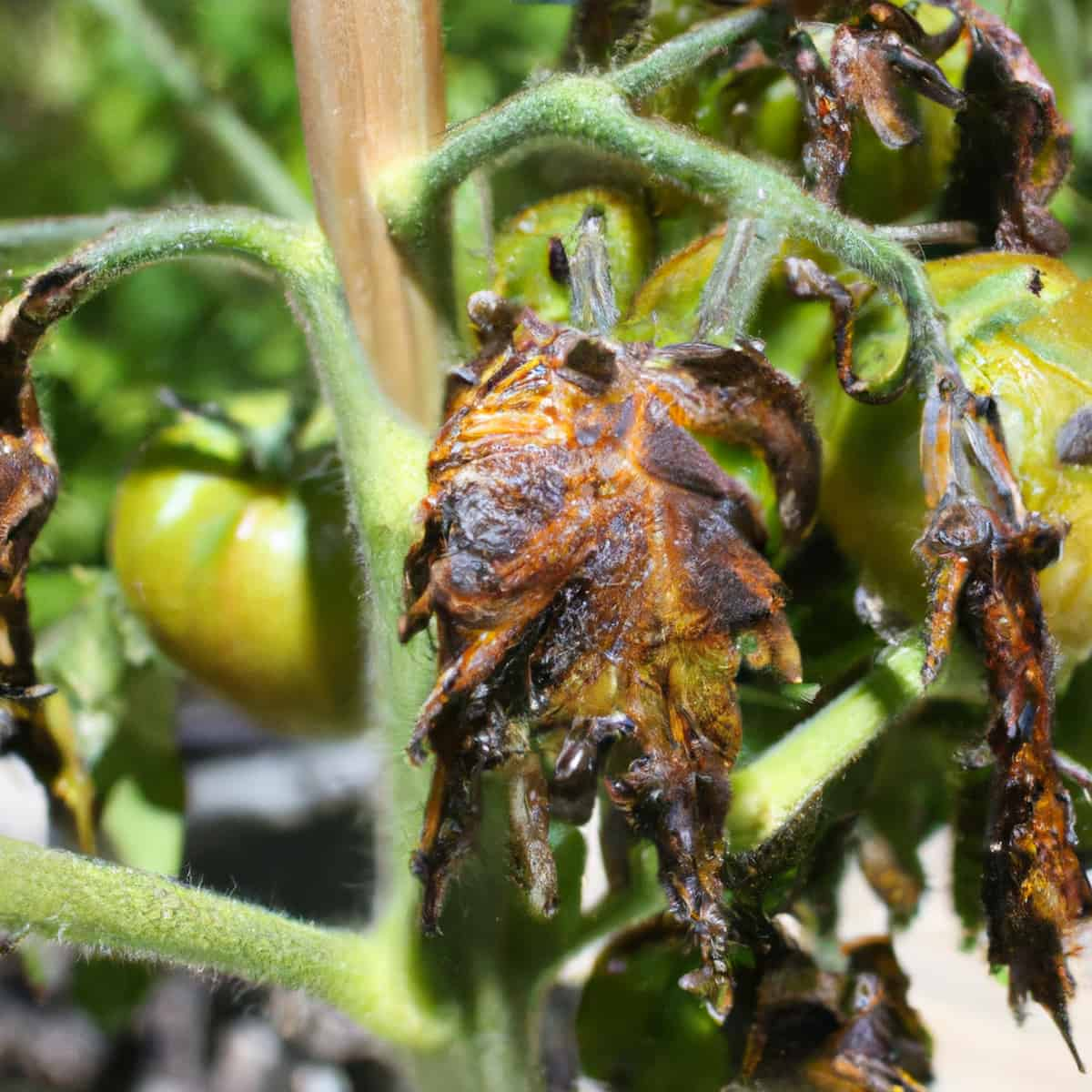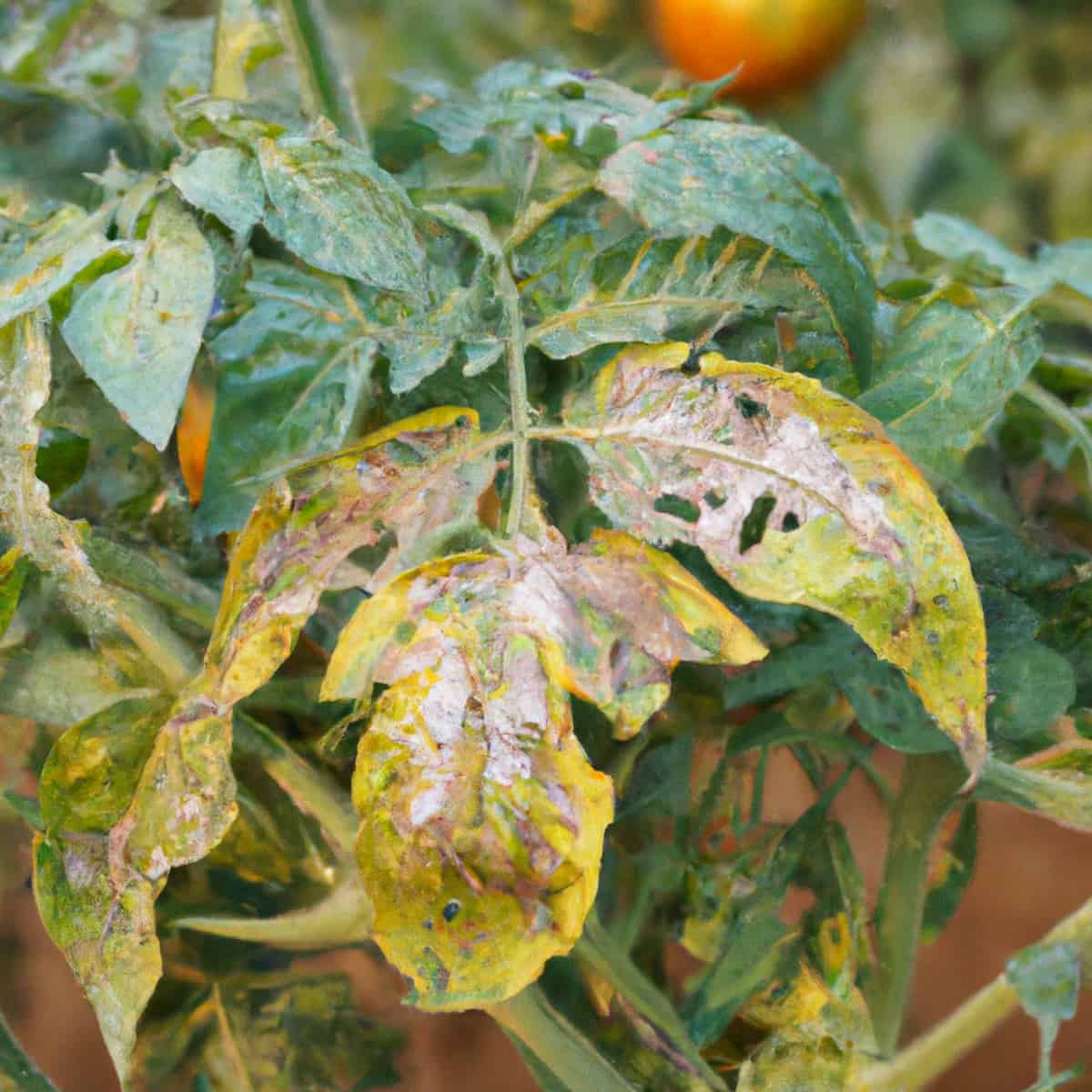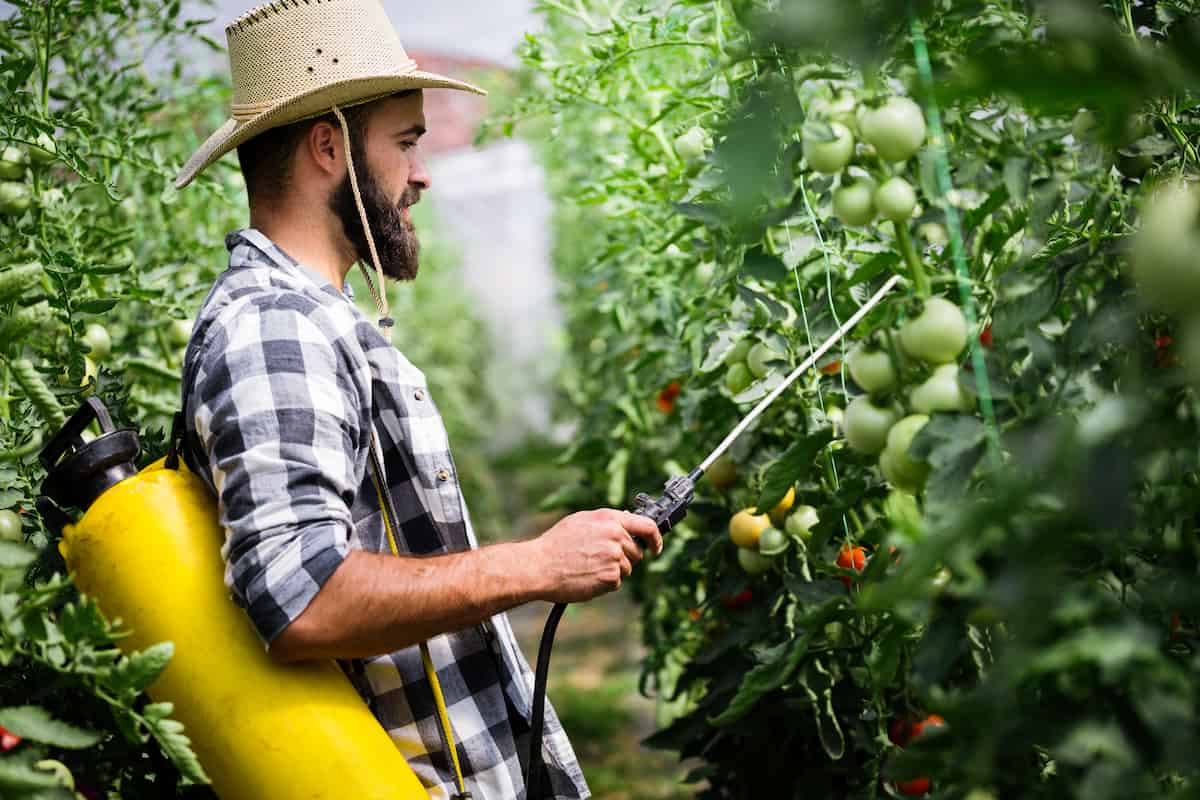Damping off is a severe issue for tomato growers, as it can quickly spread and result in the widespread death of seedlings. It is caused by various fungi, such as Pythium, Rhizoctonia, and Phytophthora, that attack the seeds, stems, and roots of tomato plants. The disease is most prevalent in humid conditions, especially when the soil is cold and wet, and young seedlings or plants are the most susceptible.

The symptoms of damping off include plant death as if cut off at the base, and the spread of the disease can be rapid through the air, moving from one seed tray or garden row to another. This makes it a significant concern for tomato growers, as an outbreak of damping off can have devastating effects on the start of the growing season.
Damping off Disease Management in Tomato
The Causal Organism of Damping-off Disease
Pythium aphanidermatum is a casual organism, as well as several other fungi, including species of Rhizoctonia, solani, Fusarium, Botrytis, Sclerotinia, Sclerotium, and Phytophthora, can cause the decay of seeds and seedlings in tomato plants and lead to Damping Off. Environmental factors such as high humidity levels, cool soil, rich potting soils, and planting too deeply, can encourage the growth of these fungi and increase the risk of Damping Off.
The Disease Cycle of Damping-off Disease
The disease cycle of Damping-off disease is as follows:
- Pythium aphanidermatum and other soilborne fungi can be found in small amounts of soil and dirt, including reused seed trays and benches.
- Fungal fragments or mycelium will colonise the soil in the trays after the seed is planted and watered.
- When seedlings are kept very wet, the likelihood of an outbreak of damping-off increases.
- Damping-off pathogens can colonise the soil in seed trays via openings in the tray bottom on dirty greenhouse benches.
- When one seedling in a seed tray develops symptoms, neighboring seedlings are frequently infected, resulting in an epidemic of damping-off disease.
Causes/Conditions Favorable for Damping-off Disease Spread in the Field
Favorable conditions for the damping-off disease include high humidity, high soil moisture, overcast weather, and low temperatures below 24°C for a few days. Crowded seedlings, excess moisture from high rainfall, poor soil drainage, and high concentration of soil solutes can also contribute to the growth and spread of the disease. These conditions can weaken the seedlings, making them more susceptible to attack from pathogens.
Symptoms of Damping-off Disease
- Root decay of stems at or near the soil line.
- Mold growth at the soil line
- Stunted growth of young seedlings
- Wilting of leaves and seedling stems.
- Discoloration of leaves and newly emerged seedlings to grayish or brown
- Softening and thinning of infected stems, appearing almost string-like.
- Pre-emergence phase: seedling death just before reaching the soil surface, complete rotting of seedlings, death of young radical and plumule.
- Post-emergence phase: infection of young, juvenile tissues of the collar at ground level, resulting in soft and water-soaked tissue, toppling over, or collapse of seedlings.
In case you missed it: Spider Mite Management in Tomato: Symptoms, Treatment, Chemical, Biological, Natural, and Organic Control

Damping Off Disease Management in Tomato by Cultural Method
Integrated management of damping-off through cultural methods includes:
- Seed treatment: Treating seeds with fungicides or hot water before planting can reduce the number of fungal spores in the soil and promote healthy seedling growth.
- Deployment of resistant or tolerant cultivars: Using cultivars that are naturally resistant or tolerant to damping-off diseases can help reduce the severity of the disease.
- Adoption of best cropping practices: Maintaining good soil drainage, avoiding over-watering, and planting seeds at the correct depth can reduce the chances of seedling infections.
- Proper sanitation: Sanitizing greenhouse benches, seed trays, and other surfaces can reduce the number of fungal spores in the growing environment.
- Maintenance of optimal growing conditions: Maintaining a high level of light and temperature can promote healthy seedling growth and reduce the risk of damping-off infections.
Damping Off Disease Management in Tomato by Biological Method
- Biological methods of controlling damping-off disease involve using biocontrol agents, such as beneficial fungi like Trichoderma and Gliocladium, and bacteria like Pseudomonas and Bacillus, as an alternative to chemical fungicides.
- These biocontrol agents work by preventing the growth of the damping-off pathogens through five mechanisms and can effectively manage the disease in many studies. The use of biocontrol agents has become increasingly popular due to their lower negative impacts on human health and the environment compared to chemical fungicides, and also to prevent the development of pest resistance to pesticides.
- However, not all biocontrol agents are marketed and used for this purpose. Some formulations are specific to a single pathogen. The biocontrol industry has become dynamic in recent years, with an increased focus on developing and commercializing biocontrol formulations based on scientific knowledge.
Damping Off Disease Management in Tomato by Chemical Method
- Chemical control of damping-off can involve using fungicides as a foliar application. Some commonly used fungicides for damping-off include etridiazole and metalaxyl against Phytopthora and Pythium spp., benomyl and thiophanate methyl against Fusarium and Rhizoctonia spp., mancozeb and maneb against Fusarium and Pythium spp., and captan against common damping-off pathogens.
- However, due to the high cost of fungicides, the limited number of products registered for some crops, and the decrease in market availability of fungicides, chemical control of damping-off is becoming increasingly limited.
- Additionally, the development of resistance to commonly used fungicides by several strains of pathogens has challenged the long-term sustainability of chemical control.
- Therefore, non-chemical measures, such as biocontrol solutions, are being increasingly developed and used for the management of damping-off, particularly for post-emergence damping-off management.
In case you missed it: Fruitworm Management in Tomato: Symptoms, Treatment, Chemical, Biological, Natural, and Organic Control

Preventive Measures for Control of Damping Off Disease
- Use sterile containers and a sterile potting medium.
- Avoid overly damp conditions and maintain a steady temperature.
- Sprinkle a layer of sand, perlite, or peat moss on top of the soil to discourage bacteria and fungi.
- Water from the bottom to reduce moisture on the leaves and stems.
- Aim for a low pH in the potting mix or garden soil.
- Use a preventative fungicide such as soluble copper spray.
- Monitor for infected plants and separate them immediately from healthy ones.
Conclusion
If plants are affected by damping-off, it is important to immediately dispose of and destroy the affected plants to prevent the spread of the disease. This can help prevent the damping-off fungi from overwintering in the soil and attacking new seedlings in the future. It is also recommended to disinfect or discard the containers used to prevent the further spread of the disease.
- Beneficial Insects in Pest Management
- Natural Solutions for Pest Control in Flower Gardens
- Types of Fungicides Used in Agriculture
- Common Issues in the Fruit Development Stage of Pomegranate Farming
- Fruit Development Issues in Papaya: Easy Solutions and Treatment
- Soil-Borne Diseases and How to Protect Your Plants
- Practices to Prevent Disease Spread in the Garden
- From Wilted to Thriving: How to Treat Root Rot Naturally in Houseplants
- Natural Remedies to Cure Brown Spots on Fig Tree Leaves